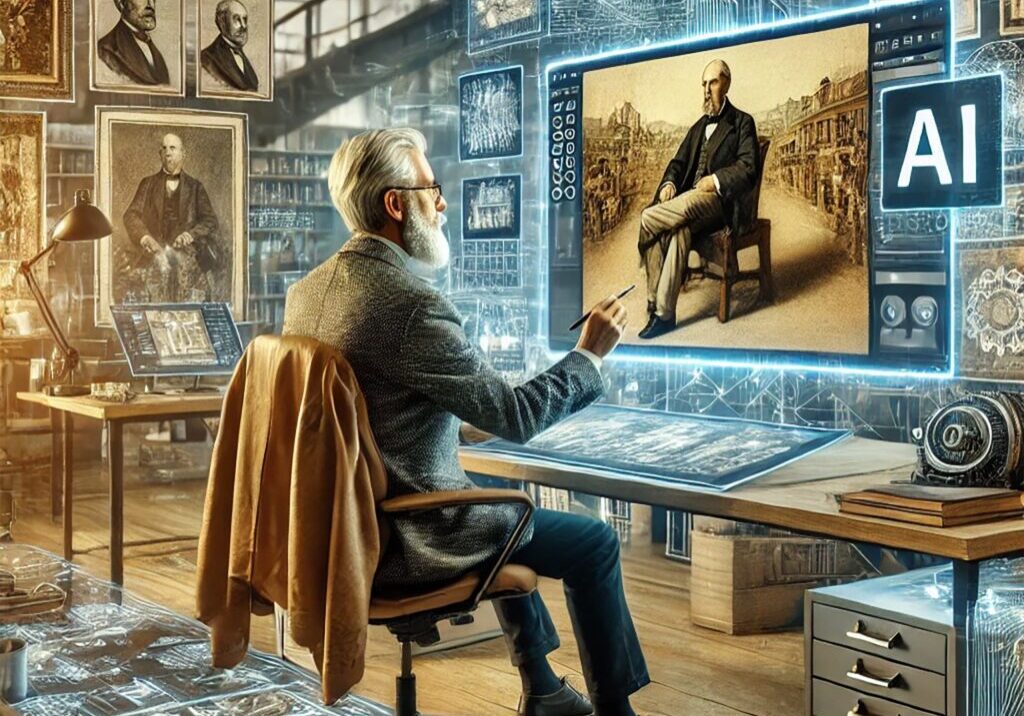
Washington Speaks: Uniting the Army by Voice, Not Just Command
Introduction
There are generals who command with fear, and others with strategy. George Washington led with something rarer: tone. When Congress appointed him Commander-in-Chief of the Continental Army in 1775, Washington took command of an untrained, under-equipped, and uncertain force. The army had no consistent pay, no standard training, and no long-term enlistment system. What it had, at best, was a cause. What kept it from falling apart was not just orders.
It was Washington’s ability to speak- to a room, to a regiment, and to a moment. His words didn’t echo because they were dramatic. They mattered because they were measured. And in a time of doubt, restraint became the language of leadership. Washington in the Mural In the 250th Anniversary Mural, Washington does not tower or shout. He is shown mid-speech, not mid-battle- his figure calm, upright, and in rhythm with the soldiers around him. This vignette is placed between the formation of the Continental Army and early encampments. The scene is not about war. It’s about cohesion. It reflects the quiet authority Washington used to keep an unsteady force from unraveling under pressure.
A Leader Chosen for Symbol and Skill Washington’s appointment was both political and practical. As a Virginian, he signaled intercolonial unity, bridging the distance between northern protest and southern wealth. As a former officer in the French and Indian War, he brought experience to an army that sorely needed it. But Washington’s greatest strength wasn’t in his military maneuvers- it was in his awareness of what the army represented. He knew this was not just a war for land. It was a war for legitimacy. That meant every decision, every speech, and every silence would help define what kind of republic might follow.
Moments When His Voice Held the Line One of Washington’s most powerful moments came years after his appointment- at Newburgh in 1783. Officers were on the verge of mutiny over unpaid wages. Tension threatened to undo everything the war had achieved. Washington entered the room, said little, and read a letter from Congress. Then, fumbling for his spectacles, he added a quiet line: “You will permit me to put on my spectacles, for I have not only grown gray but almost blind in the service of my country.” That single sentence shifted the room. Officers wept. The crisis passed. It wasn’t a command. It was a reminder- of presence, sacrifice, and shared burden. And it worked. Tone as Tactic Washington often used restraint where others might have postured. He rarely interrupted Congress’s authority. He deferred decisions he could have claimed.
In doing so, he modeled a different kind of power- one rooted not in dominance, but in responsibility. When soldiers froze in winter or bled in retreat, his orders came not with theatrics, but with clarity. His voice didn’t ask for loyalty. It earned it. Even in frustration, his words remained shaped by care for what the army meant- not just what it did. Why It Still Matters The Revolution was held together by more than musket and strategy. It was held together by posture. By tone. By the ability of one man to reflect back to the army the dignity they were fighting for- even when they couldn’t feel it themselves. Washington’s leadership reminds us that unity is rarely forced. It’s invited. Sustained not by charisma alone, but by consistency- of message, of moral clarity, and of presence. He did not win every battle. But he never lost the army. And in that, the war had a chance.
Further Reading / Explore More
In the mural, Washington’s voice is rendered as posture. His presence quiets the scene- not to downplay tension, but to show how restraint can hold more power than sound. The soldiers near him are not charging. They are listening. And that listening is part of the Revolution, too.
Related Blog: The Continental Army: From Farmers to Fighters Mural Link: https://usa250thanniversarymural.com Tags: George Washington, Revolutionary Leadership, Continental Army, Tone and Command, Washington’s Speeches, American Revolution, 250 Mural, Newburgh Conspiracy, Moral Authority, Founding Figures

